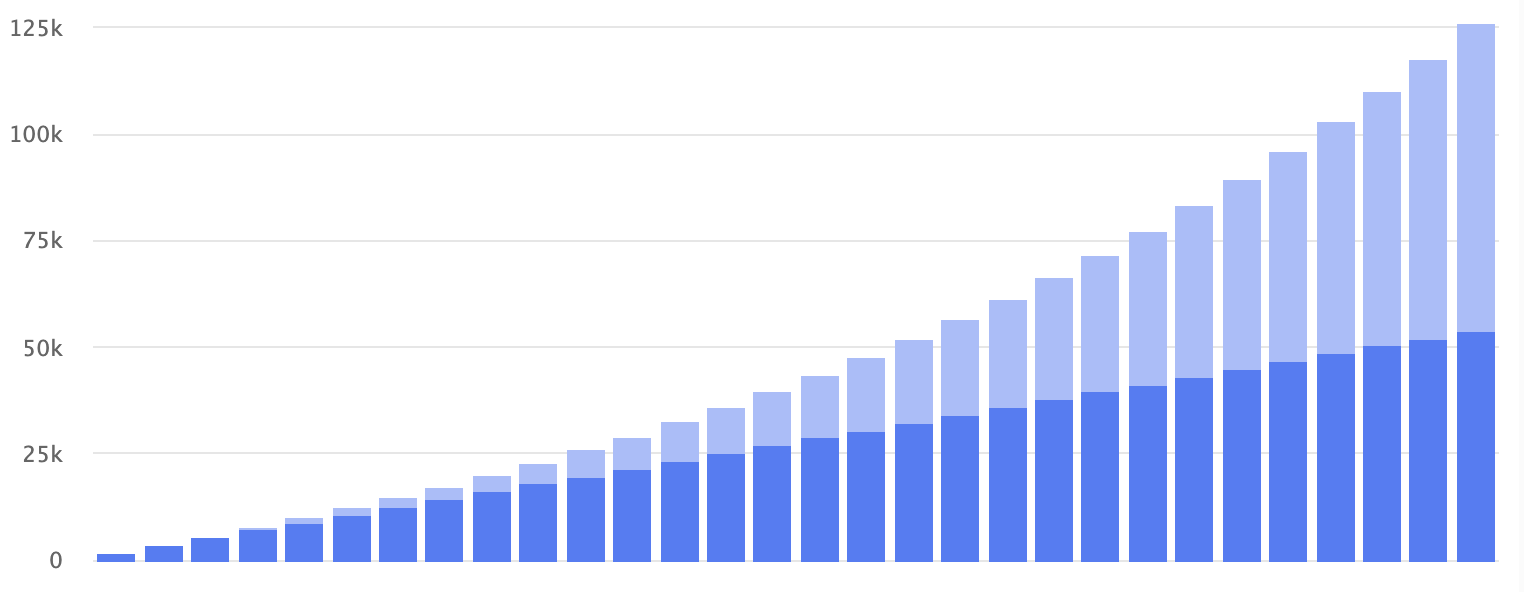One afternoon checking in on your super could make you up to $125,000 better off in retirement!
When you get your payslip, how often do you actually check the super section?
And no, a casual glance while hunting for your take-home pay doesn’t count!
We all know super is important—kind of like the vegetables of your financial diet.
Skip it, and you might feel fine now, but future-you will be wishing you’d paid a bit more attention to those financial greens.

And now, there’s even more reason to look carefully at your superannuation payments.
New research by the Super Members Council (SMC) shows one in four Australians workers are missing out on unpaid super.
In the 2021-22 financial year, 2.8 million Australians missed out on more than $5.1 billion in super entitlements - and that’s before we take compounding into account.
Those are some big numbers, but what does that mean for an individual?
The average worker with unpaid super is losing out over $1,800 in super per year.
It’s important to note that around three-quarters of super at retirement is expected to come from compounding returns, so that $1,800 loss per year could end up costing you more than $125,000 over the next 30 years.

It might be hard to visualise $125,000 right now - but perhaps think about someone in your life who’s close to retirement age.
What would an extra $125,000 mean for them?
That might help contextualise super for you, and make it feel more tangible even if retirement is a while away for you.
Quick refresher: the Super Guarantee or the minimum superannuation an employer must legally pay in Australia is 11.5% of your income.
And unpaid super is when a worker is paid less than the full superannuation amount they’re entitled to, or in some cases paid no super.

Who’s the most affected by this?
Young workers, migrant workers, those in insecure work and women are the most likely to be impacted by this.
Almost 31% of workers in their 20s and 28% of workers in their 30s are likely to be impacted with underpaid super.
It gets more grim.
Nearly one in two workers who earn less than $25,000 and nearly one in three workers earning between $25,000 and $50,000 annually have been underpaid super.
The report also found that men are underpaid super more often than women.
However, due to a range of factors including the gender pay gap, women often still have lower super balances.
Is anything going to change about this?
Maybe! According to the SMC, a big contributor to unpaid super is that
In the 2023-24 Federal Budget, the government announced that it wanted all Australian employers to pay superannuation to employees at the same time as they pay wages.
Currently, super only has to be paid at least quarterly.
But this potential change hasn’t been introduced in parliament yet.
How do I check if my super is being paid correctly?
Start by having a look at your payslip to make sure it’s showing the amount of super you’re entitled to.
For quick maths, you can calculate your base salary (ie $100,000) x Super Guarantee (0.115) = $11,500.
You want to ensure a portion of your Super Guarantee is stated correctly on your payslip.
Buuuuut even if the super stated on your payslip is accurate, it doesn’t necessarily mean super actually being paid.
It’s a great idea to get into the practice of logging into your super account’s member portal regularly to check that you’ve been paid the right amount.
You can also use myGov to check super contributions made by your employer.
For now, it’s a good idea to do this around once a quarter as that’s the frequency at which super has to be paid.
If you notice something that’s not quite right about your super, you can bring it up with the payroll department at your workplace.
However if that’s not possible for you, or you that doesn’t get you anywhere, you can also lodge an unpaid super enquiry with the ATO.
If reading this has got you feeling inspired about revisiting your super and making sure you’re making informed decisions for your retirement, spend an afternoon going through the Super Academy.
Sign up for Flux and join 100,000 members of the Flux family